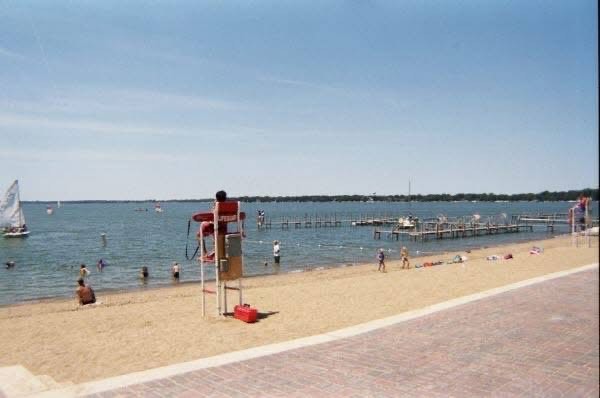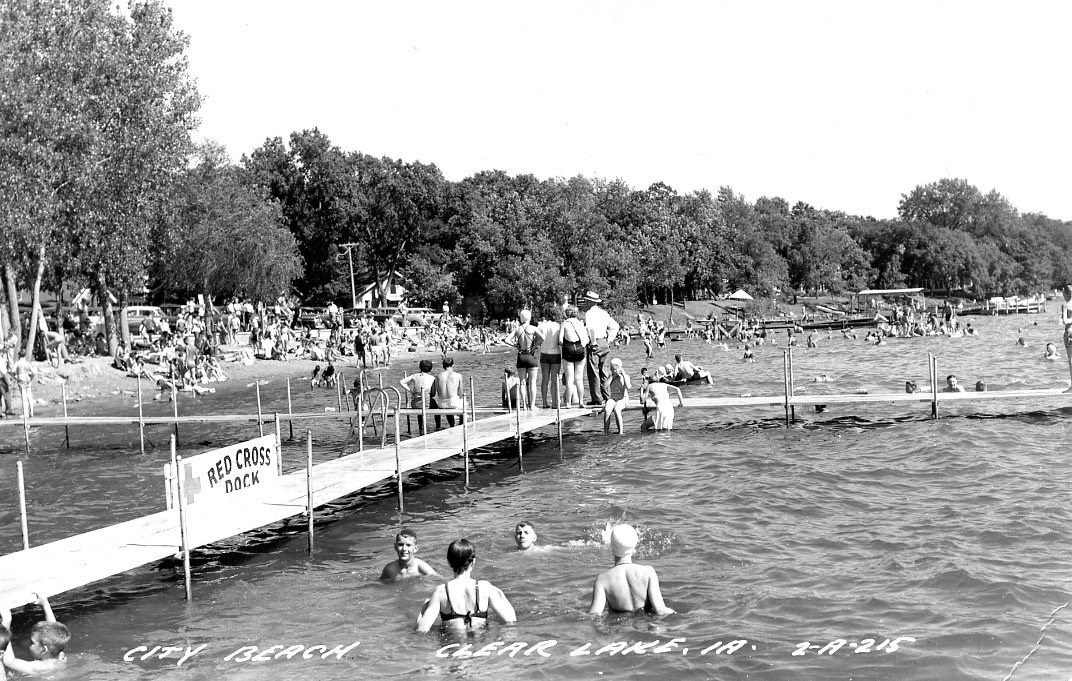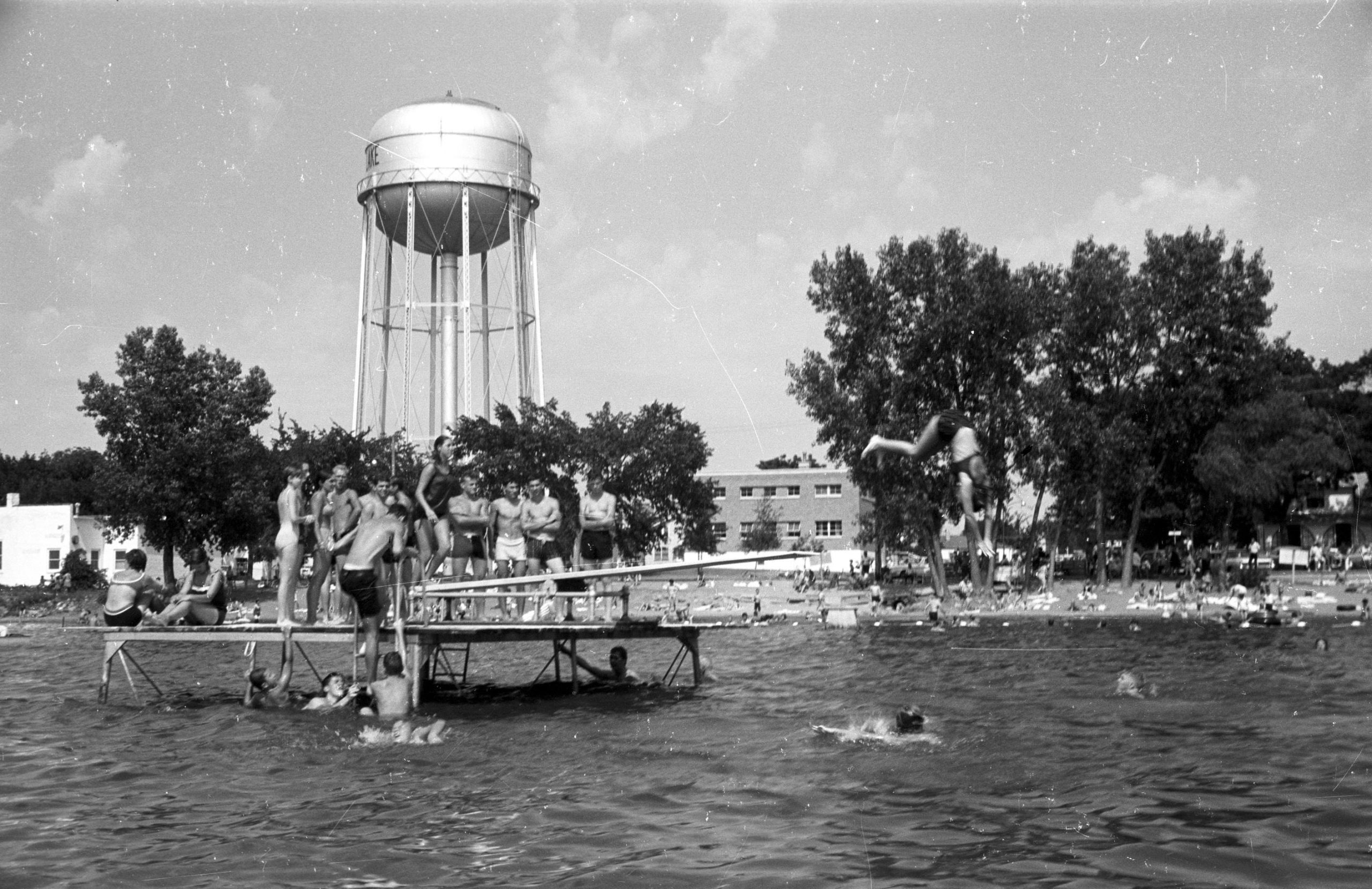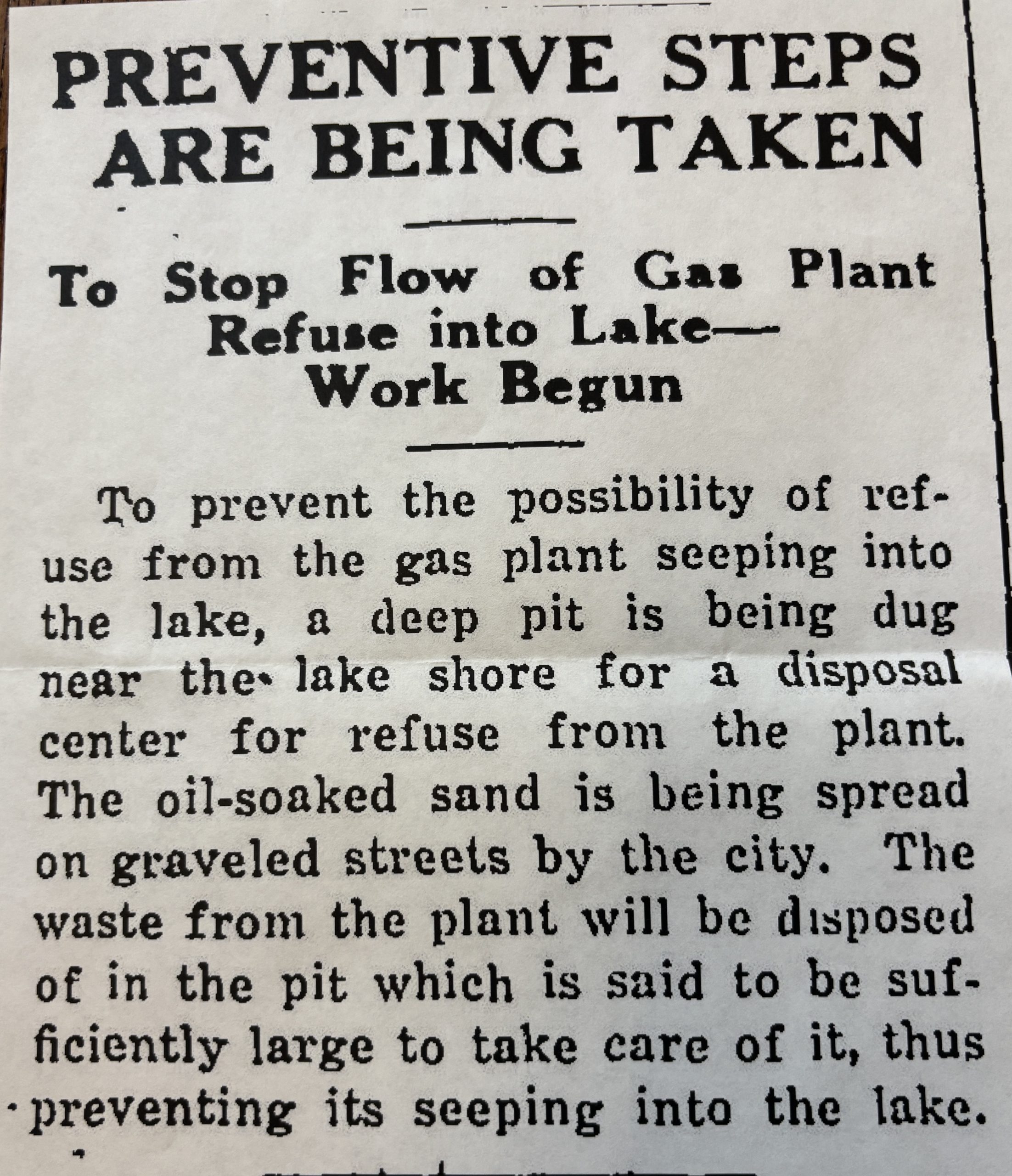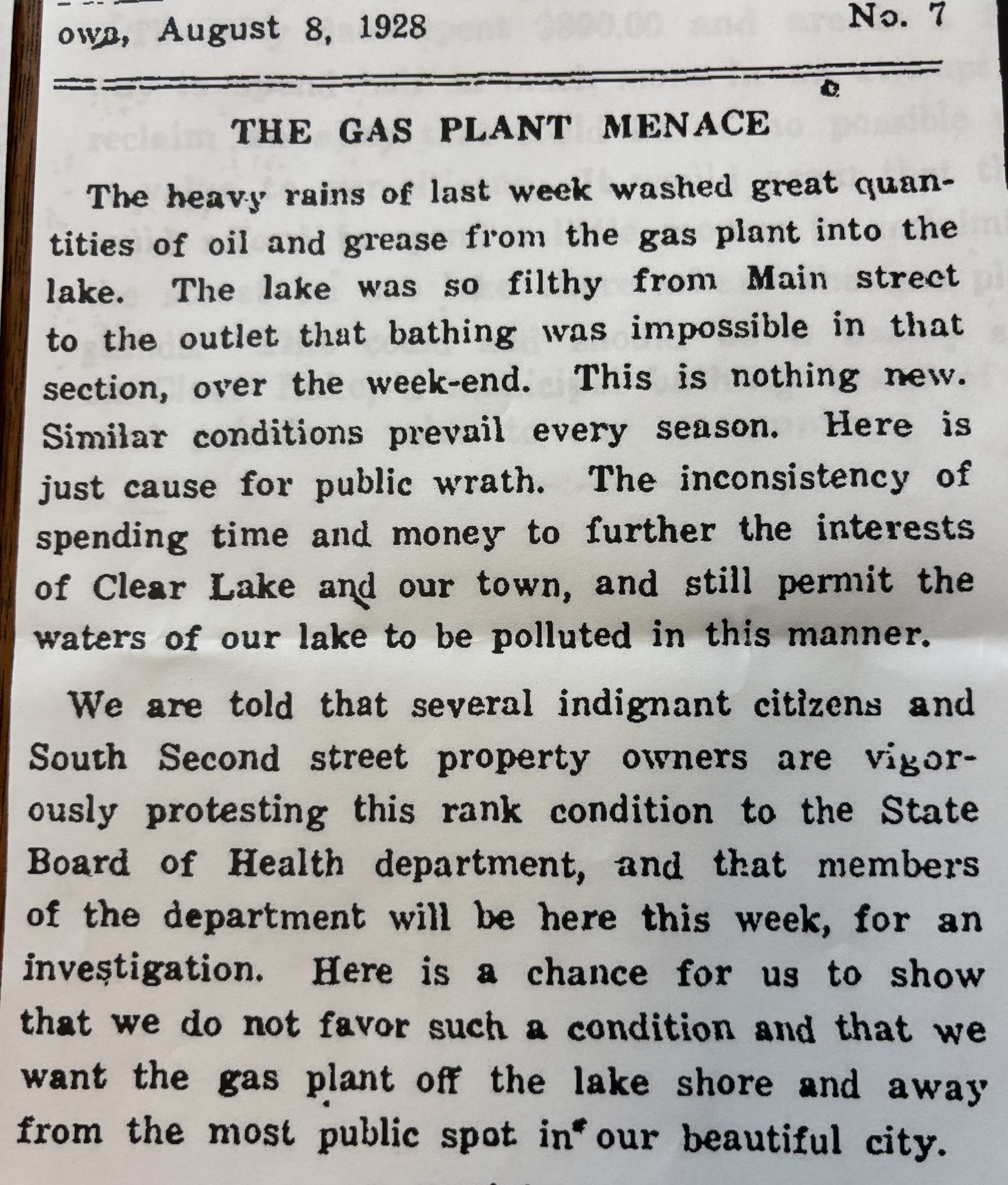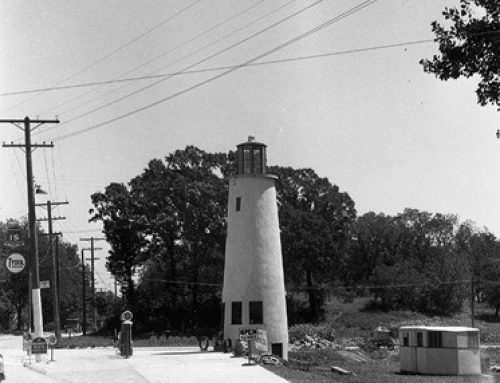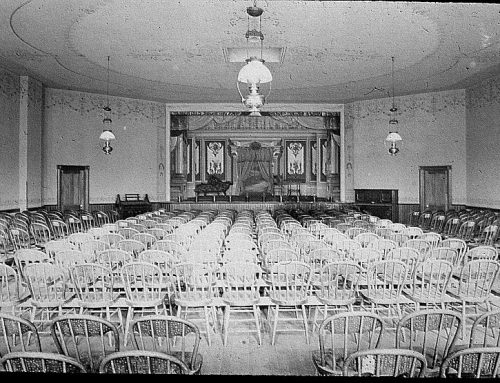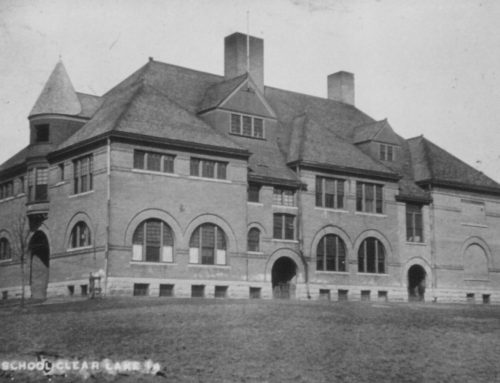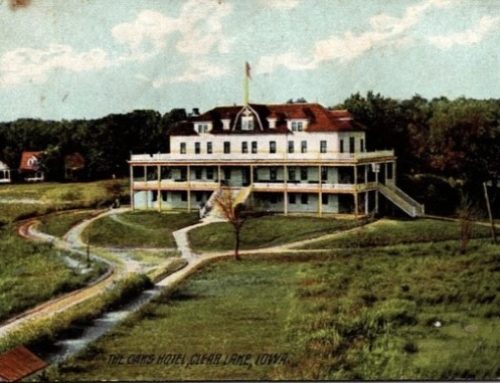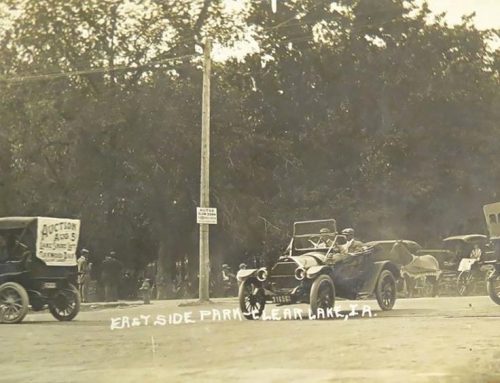Let’s take a walk along Clear Lake. Starting at the north end of Lakeview Drive we enjoy the lake breeze as we approach the lovely Lady of the Lake. Her windows seem to wink as we pass on to the Seawall recognized on the Natural Register of Historic Places.(Thanks Beth Ann Schumacher) People are lingering on picnic tables and looking through the lake viewfinders at boats. Moving along, the lighted dock gives us a perfect place to dangle our feet in the water.
Walking in front of the charming Yacht Club building, we are beaconed by benches that provide a stunning sunset view. Shouts of joy ring out from the children running through the splash pad. The backdrop of vintage postcard art on the bathhouse depict Clear Lake scenes.
We end on a sandy beach and shallow swimming area. This beach is often noted as one of the best small town beaches to visit.
It wasn’t always this beautiful. In the early days of Clear Lakes settlement, the area our water treatment plant occupies was a coal gasification plant. Before electricity, this plant piped gas to the town. By products of coal tar and liquid condensate would run off into the lake after heavy rains. It wasn’t infrequent that the lake was polluted from the beach to the outlet. In those times, natural resources were thought of as infinite and easily replenish-able.
Charles Finch Crane, owner of Page and Crane Lumber, paid to advertise in both Clear Lake papers. “Hee Haw News” ran weekly from 1926-1946. He covered a variety of subjects from humor to passionate articles about improving the city he loved. Charles was an environmentalist before there was a word for it.
In 1928 he recognized the pollution resulting from the coal plant. He also had a vision of the gem Municipal Beach (City Beach) could be for his beloved Clear Lake. He spearheaded a campaign to move the offending plant and give Municipal Beach the love it deserved.
By 1931, the plant was torn down. It took many more years to complete the cleanup but soon after it was gone, the townsfolk began to pay attention to City Beach.
In 1935 Red Cross swimming lessons were taught. In 1938 enough money had been raised to hire a Red Cross Lifeguard to be on duty from 10-6. He was provided with a rescue boat and ropes designated a swimming area for smaller kids.
Local clubs sponsored and installed a diving platform for the advanced swimmers. By 1953, City Beach was alive with activities year round. A clock told kids when to go home. A person was hired to clean the beach of cans, glass and dead fish every morning. Nearby towns sent their hockey teams to participate in the winter tournaments.
City Beach would be unrecognizable to early settlers. Aren’t we glad?
The newspaper articles Hee Haw News are from the archives of the Clear Lake Mirror and Clear Lake Reporter. The photos are from the Clear Lake Library Historical collection.
To read more about the gas plant of the 1920’s, go to the Clear Lake Public Library homepage. Select the History section and click on the dropdown Blogs. David Miller has contributed a great article about the plant’s history.

